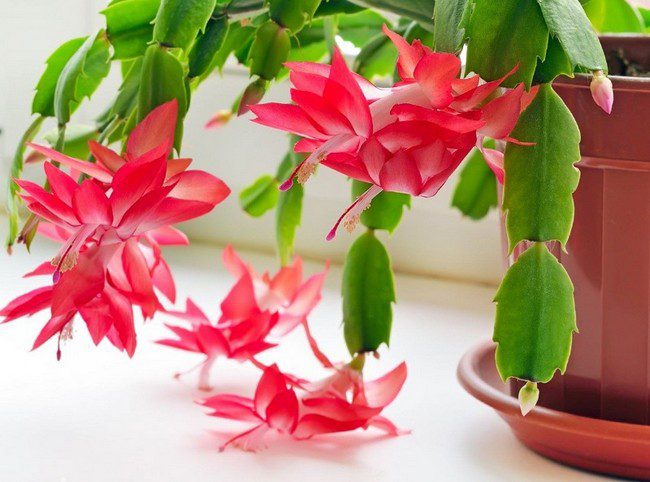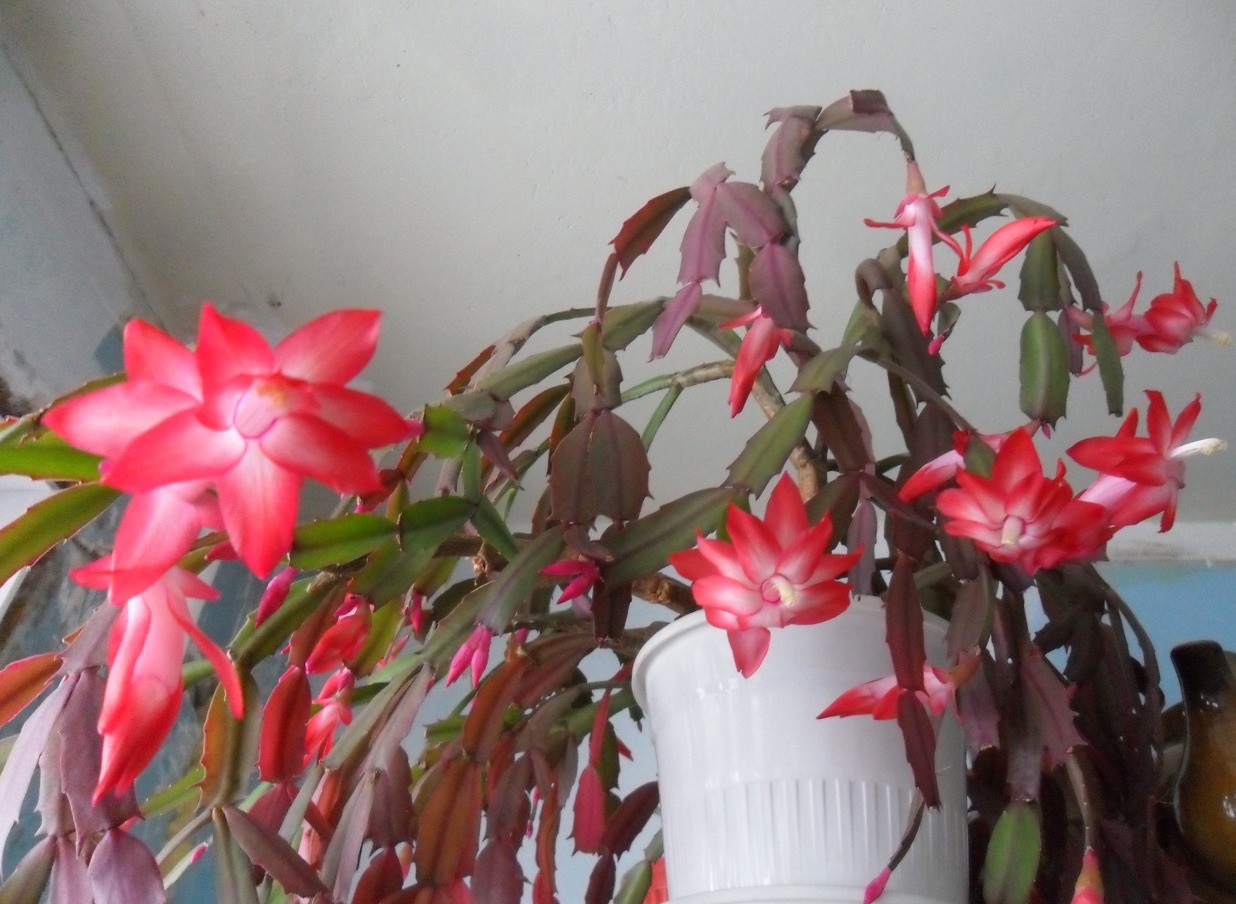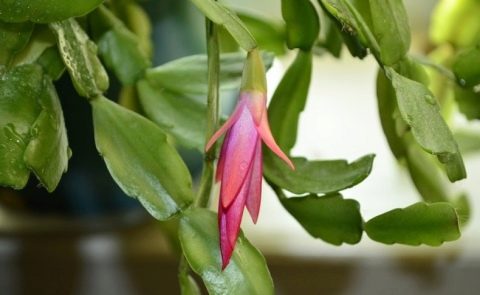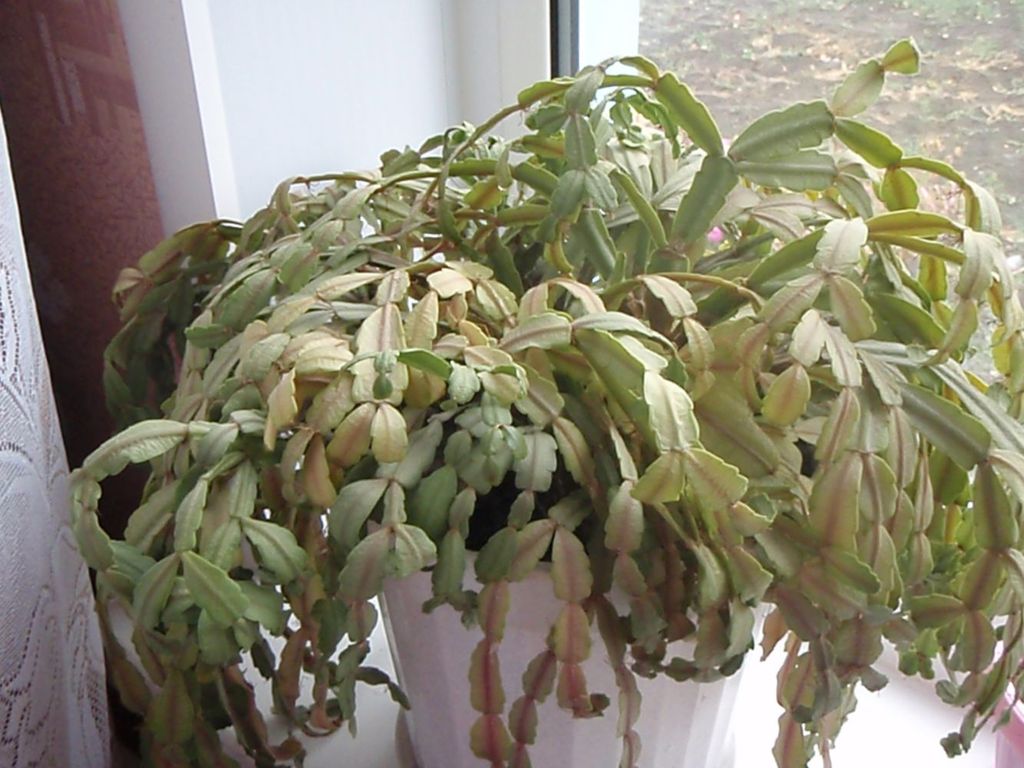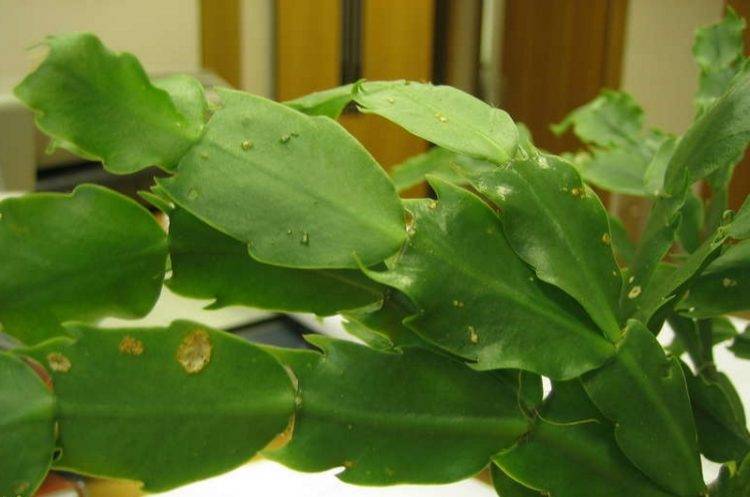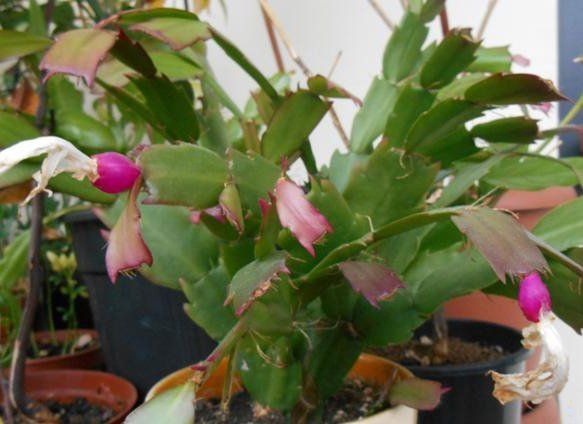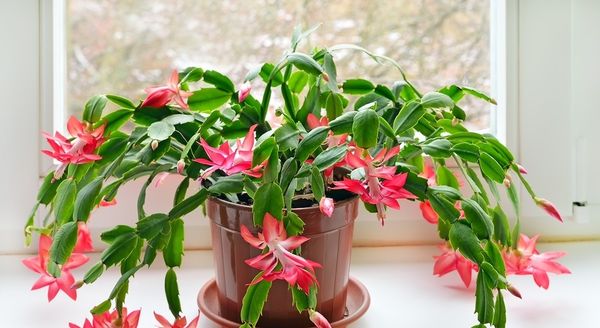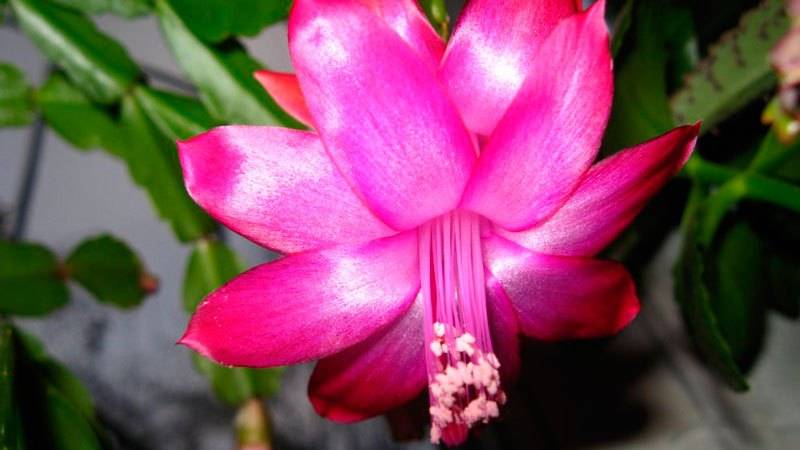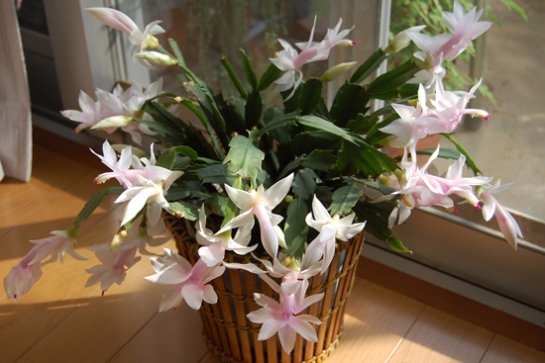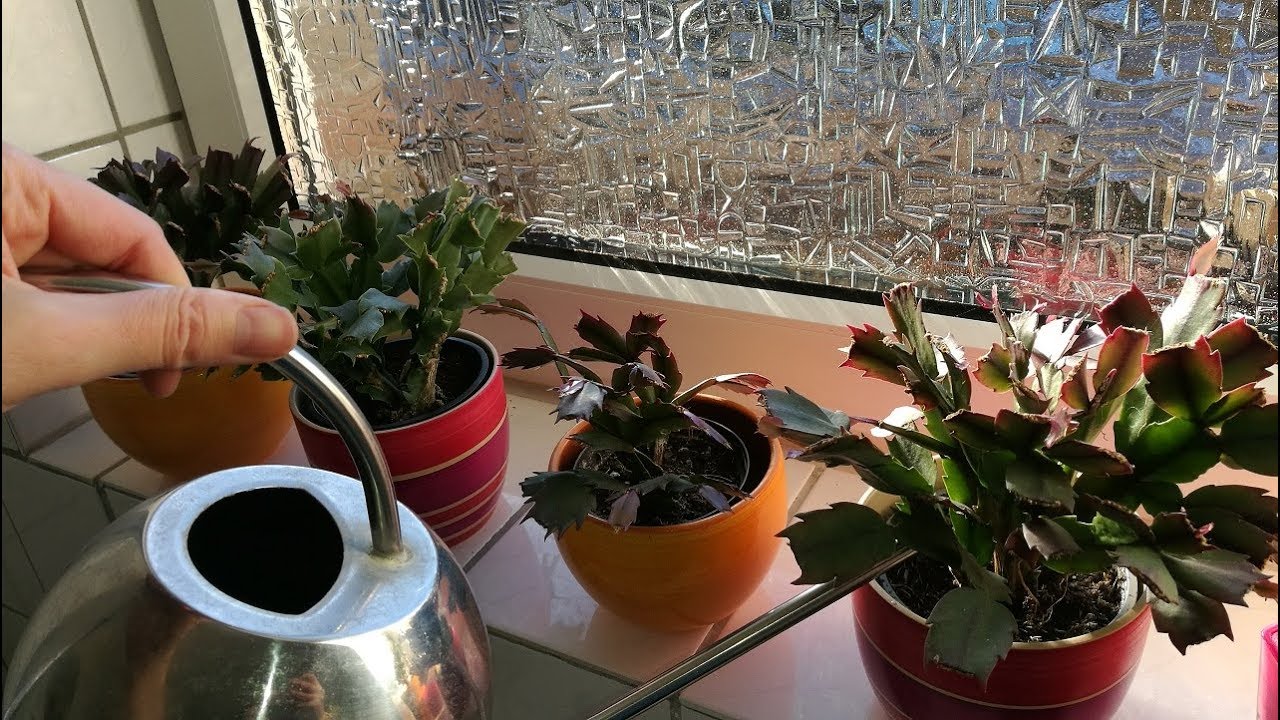Why did the orchid put the leaves down: reasons
Loss of turgor pressure in the leaves is the main sign of a lack of nutrition coming from the soil to the plant's root system. As a rule, it is the lower leaves that become soft, but if the ground part of the flower does not have enough nutrition, then redistribution occurs, and the upper leaves become sluggish.
There are several reasons for the change in foliage density:
- overheating or hypothermia;
- pests, diseases;
- lack of moisture;
- problems with the root system;
- dense substrate.
Each of them is worth considering in more detail.

Overheating or hypothermia
Orchids do not like too high temperatures and exposure to direct sunlight. Overheating negatively affects the plant, resulting in:
- the soil heats up;
- there is a rapid evaporation of moisture;
- the root system dries up.
In this case, the plant experiences a moisture deficit and compensates for it from the foliage.
At the first signs of overheating, the flower must be transferred to a shaded, but at the same time, bright place. An overheated flower is not recommended to water or irrigate, as this can provoke tissue death. Watering can be done when the flowerpot has cooled to room temperature.

Hypothermia also adversely affects the life of the flower. This most often occurs during the winter, when the flower grows on the windowsill... The temperature below +15 ° C is critical for the plant, then it dies.
Peculiarity! The optimal temperature regime for an orchid in summer is + 15-30 ℃, in winter + 18-22 ℃.
Pests and diseases
One of the factors contributing to wilting is the appearance of pest colonies. Among all types of parasites, orchids are most commonly affected by the following:
- spider mite;
- aphid;
- red tick.
They actively suck out juice from leaf cells, which leads to a change in their turgor, lethargy and discoloration.
Important! If mites are found on the orchid, you need to immediately isolate it from other plants. Next, carry out a number of disinfecting measures: wipe the leaves with soapy water and treat with an insecticidal agent such as Fitofers, Actellik, etc.
Re-processing is carried out after a week, since the agent is aimed at destroying only adults, but not their eggs. Rinsing the plant under a shower is a good preventative measure. Such an event is recommended to be held at least once every two months.

The flower is lethargic due to lack of moisture
The orchid is a thermophilic tropical plant, so insufficient watering can negatively affect its appearance. In order for the flower to please with the color of the foliage and abundant flowering, its soil must be moderately moist. If watering is insufficient, then the amount of moisture in the leaves is significantly reduced, and they acquire a sluggish, unaesthetic appearance.
When watering, it is recommended to be guided by the irrigation regime and at the same time take into account the state of the soil. In addition, the main factors affecting the frequency of watering are:
- air temperature;
- the size of the flower pot;
- condition of the substrate.
Interesting! When watering, you need to adhere to the rule - when the upper layers of the soil have dried up, the flower needs watering.
Due to root problems
When the root system of the orchid is healthy, the roots are gray with a green tint and a dense structure. If the roots are infected with bacteria or rotten, they acquire a dark color and a slimy structure.

You can save such a flower if you take restorative measures:
- cut off the affected areas of the root system;
- cut the sections with charcoal;
- transplant the orchid into new soil.
After such events, the flower can bloom even in the next season.
Peculiarity! Shriveled leaves can be wiped with a solution of 0.1% succinic acid. This will help restore turgor.
Dense substrate
Often too dense soil becomes the cause of lethargy. The flower loves a fairly humid environment, but the following conditions must also be met:
- there must be air circulation between the roots;
- the soil must be loose;
- provide moderate watering.
Too moist soil leads to rotting of the root system. These points should be taken into account when watering.

Why are there problems?
Sometimes, after transplantation, the foliage begins to fade and fall off in spathiphyllum, yellow and black spots appear on the surface of leaves and stems, yellow tops. In such situations, the flower can be reanimated, but first you need to understand the causes of the disease.
- The wilting of a flower provokes:
- Wrong time for transplant. You need to transplant a flower in the spring, at a time when there are no inflorescences.
- Frequent soil changes.
- Incorrectly selected substrate and lack of drainage. Spathiphyllum is not suitable for heavy and acidic soil and a peat composition, in which the soil remains moist on top, and inside it is dry - the roots do not receive enough moisture.
- Drops the leaves of spathiphyllum if:
- Air is too dry.
- Dry soil. Insufficient moisture nutrition provokes a loss of turgor and the appearance of a sluggish stem.
- Stagnant water - provokes root rot, as a result of which the plant does not receive proper nutrition.
- The reasons for the appearance of black tips on the leaves are:
- Flooding plants, frequent spraying. Failure to absorb all the moisture that is given to the plant leads to root rot.
- Air overdried by heating household appliances.
- Women's happiness turns yellow if:
- Improper lighting, the plant received thermal burns from bright sunlight.
- Low air humidity, insufficient watering of the plant.
- Unsuitable soil.
By purchasing spathiphyllum, you can only approximately create "native" conditions for it, but it is important first of all to know whether it is necessary to immediately transplant the purchased plant, and how to do it correctly. We also propose to find out about how often spathiphyllum should be transplanted and exactly when it is better to do it.
Caring for the Decembrist flower at home
A plant native to the tropics dies when the temperature drops
In order for the Decembrist to grow well and bloom profusely, it is important to bring the conditions of its maintenance closer to natural
Decembrist accommodation
Schlumberger is best grown in the eastern part of the building. It should not be placed on the southern windowsills in order to avoid exposure of the plant to direct sunlight, which makes the leaves of the Decembrist flower turn yellow and fall off.
If it is not possible to provide the Schlumberger with diffused light, the plant must be shaded. When the flower buds form and bloom, the bowl with it does not need to be rotated and moved. Otherwise, the zygocactus will drop all the buds.
In summer, the flower can be placed on the balcony or taken out into the garden, where the Decembrist needs to choose a place that is calm and devoid of direct sunlight, but a sufficiently illuminated place. Zygocactus blooms in late November. After flowering, it must be kept in a cool room until spring.
Suitable temperature
- For the Decembrist, the temperature is comfortable in the range of 18-25C.
- When the zygocactus is actively growing and blooming, it needs to provide an ambient temperature from + 18C to + 20C.
- In order for the zygocactus to gain strength before flowering, it is necessary to maintain a temperature near it from 12C to 16C.
Watering and feeding
How to care for a Decembrist flower at home? As well as for deciduous houseplants.
The Decembrist should be regularly watered with settled water at room temperature.With the beginning of spring, the plant must be fed every month using complex fertilizers for flowers, reducing the recommended dose of the drug by half. In the summer, the Decembrist should be fed twice a month; in the fall, you do not need to fertilize the flower.
In dry indoor air, the lack of moisture for the plant can be compensated for in one of the following ways. The first is to spray the flower with settled water every day, the second is to place the bowl with the plant on a tray with moistened drainage, moss or peat.
Pruning Decembrist
When caring for the Decembrist, you need to prune it periodically so that the bush is attractive in appearance and blooms profusely.
To this end, in June, incorrectly located shoots are shortened, moreover, without cutting off the shoots, but unscrewing them by hand.
Transplanting a Decembrist flower at home
It is best to arrange for the flower to move to a new pot at the end of February, when it fades.
The most suitable plant pot is very tall and fairly wide. After all, the roots of Schlumberger are superficial. The bottom of the bowl is sprinkled with drainage.
A comfortable substrate for the Decembrist is loose and light, containing peat, fertile soil and coarse sand in a ratio of 2: 1: 1.
To disinfect the substrate, you can add crushed coal to it, and to ensure good water permeability - brick chips. For this purpose, vermiculite can also be used.
When a flower is transplanted Decembrist? Young every year in bowls that are several centimeters larger than the previous ones, an adult zygocatus can be transplanted as needed, no more than once every 3-4 years.
Care rules
With irregular watering, improper feeding, its root system begins to be damaged, and the top gradually withers. If you do not catch yourself in time, then the cactus will no longer be saved
Therefore, from the very beginning, it is very important to know how to properly care for it.
The most common reasons for improper care are:
- Overfeeding - Usually, a flower does not need nutrients for growth, so experienced growers feed it only before flowering. But they can also feed it in April, when it begins to build up green mass. It is enough for him to give half the dose of a complex fertilizer intended for flowering plants. If you accidentally overfeed it, the leaves may dry out. And it is necessary to take into account that there is less nitrogen in the composition of fertilizing than other elements.
- Improper watering - Since it belongs to cacti, it tolerates drought calmly, and due to frequent overflow, its roots begin to suffer, which is reflected in the leaves.
- Root diseases - These diseases are primarily caused by waterlogging of the soil. If you notice that mold has appeared on the surface of the soil, then this is a sign of rotting of the root system.
Fortunately, the above reasons are easy to fix if you catch yourself in time.
Watering
The Decembrist is watered with pre-settled water at room temperature, the frequency of watering should not be more often than once every five days. Before that, feel if the top layer of the soil has dried out well, if it is still wet, then set aside watering for a few days. If at the bottom of the pot there are drainage holes, then the flower is watered by pouring water into the pan of the pot, in which case the risk of overflow will decrease significantly, since moisture will not stagnate in the soil.
During the bud formation period, the frequency of watering is slightly increased; the topsoil should almost always remain slightly damp. As soon as the last bud has bloomed, the amount of added moisture is reduced until April. If the summer is hot, then the Decembrist can be sprayed, before that, the entire soil is covered with plastic wrap so that there is no excess moisture.
Lighting
It is undesirable to put a pot with it in direct sunlight, otherwise its leaves will dry out and fall off.Therefore, in summer it is better to keep it in partial shade, but with access to fresh air. In extreme cases, it can be covered from direct sunlight with paper. Southeast window sills are best suited for it. In summer, it can be displayed on the balcony.
Transfer
In order for the Decembrist to successfully grow and bloom for many and many years, it must be transplanted into new soil every five years, since the old soil is depleted during this time. The new pot should be slightly larger than the old one, as the roots usually grow during this time. But the pot shouldn't be too big. During flowering, this houseplant is not transplanted; this procedure is best done in the summer.
The Decembrist transplant procedure is very simple, even a beginner can handle:
- In order to prevent moisture from stagnating, a drainage layer must be placed on the bottom of the new pot.
- The pot is then half filled with soil for flowering plants.
- The Decembrist is carefully pulled out of the old container.
- The roots are slightly cleaned of old soil, inspected for rot.
- The cactus is transplanted into a new pot, covered with new earth on top.
- Water and place in partial shade for adaptation.
How to take care of a Decembrist at home?
Zygocatus grow in good light, but do not like direct sunlight. They do not tolerate temperature extremes, because in tropical forests, the weather is always warm and humid. If the care of the Decembrist is close to natural conditions, then the plant will always be healthy and beautiful.
Location
Zygocactus is best grown on eastern windowsills. It is not recommended to put a pot with a plant near the southern windows, since the segments of its stems will begin to turn yellow and crumble from direct sunlight. If the Decembrist cannot provide diffused light, it must be shaded.
During bud formation and flowering, the plant pot should not be turned or rearranged. Otherwise, the flower will throw off its buds.
In summer, zygocactus can be grown on a balcony, loggia or garden. In this case, he needs to find a well-lit place protected from wind and direct sunlight.
The Decembrist begins to bloom at the end of November. After flowering, it must be placed in a cool room until spring.
Temperature regime
The comfortable temperature for the growth and flowering of the zygocactus ranges from 18-25C. During active growth and flowering, the plant requires a temperature from + 18C to + 20C. In order for the plant to gain strength before flowering, it must be kept at a temperature in the range of 12-16C.
Watering and feeding
Caring for a Decembrist at home coincides with the conditions for growing indoor deciduous plants. He needs regular watering with settled water at room temperature.
If the air in the room is dry, then the lack of moisture is compensated for in two ways:
- Daily spraying of the plant with settled water.
- Place the flower pot on a pallet with wet drainage, peat or moss.
With the beginning of spring, the zygocactus needs monthly feeding. For this, complex fertilizers are used for flowers, the dose of which should be two times less than what is written in the instructions. In the summer, the plant is fed twice a month, and in the fall, the Decembrist does not need fertilizers.
Pruning zygocactus
When caring for a Decembrist, do not forget about pruning, after which the bush will take on an attractive appearance and bloom profusely. To do this, in June, ugly and improperly growing shoots are shortened. Moreover, experienced flower growers recommend not cutting off parts of the shoots, but unscrewing them by hand.
Decembrist transplant
The flower is transplanted in the last days of February immediately after flowering. A pot for a Decembrist should be wide and not very high, since its roots are shallow. It is imperative to pour a drainage layer on the bottom of the pot.
Decembrist prefers a light, loose substrate, which includes:
- peat - 2 parts;
- fertile soil - 1 part;
- coarse sand - 1 part.
For disinfection, you can add a little crushed coal to the mixture, and for good water permeability - brick chips or vermiculite.
Young plants are transplanted annually into pots, which are only two centimeters larger than the previous one. Mature plants need to be replanted as needed, but not more often than once every three to four years.
For what reason can a flower fade?
This sign by itself does not carry any specific information about the existing problem, so it is difficult to say the exact reason for the wilting. Individual plants, as well as representatives of the same species, can dry out, turn yellow and lose vitality for various reasons, this process is very individual. Therefore, it is very difficult to concretize the situation and take appropriate measures to eliminate its poor condition and bring the vegetation back to its previous healthy appearance.
 Individual plants, like representatives of the same species, can dry out, turn yellow and lose vitality.
Individual plants, like representatives of the same species, can dry out, turn yellow and lose vitality.
Withered depression should not be confused with the natural periodic partial yellowing and shedding of foliage, as this is an integral part of the life cycle. These include: bushes and trees that shed foliage, vegetation that sheds all the greens completely, being in a state of complete dormancy, for example: cyclamen, anredder, begonia with a tuber root system, caladium and others. Incomplete foliage fall occurs in fuchsia, jasmine, coleria, camellia and sinningia, but a change in color to yellow in these specimens indicates that the process of vital activity is reduced. The same condition is characteristic of wilted bracts in poinsettia, or complete death of the lower rows leaves in the process of maturation in palm species. Before you begin to figure out all the reasons, you need to study every available home vegetation and learn to distinguish the natural course of things from poor care, disease or harmful insects.
If you think that homemade greens have begun to dry, you need to inspect and determine the progress of the process:
The first signs are shriveled leaves that have lost their juiciness, slow growth, pale color and general appearance of weakening. This may also indicate insufficient watering, but here it means that the depressed state persists even with a sufficiently moistened soil in the pot. Such symptoms will not indicate the presence of a problem, but will make it clear that special supervision is needed for a particular instance.
Unnatural weakening can occur when the extinction of life processes intensifies, when the general appearance ceases to be decorative, but there are no other symptoms, for example, the leaves do not change their color or obvious signs of disease that cause such a sluggish state.
Complete color change, partial or a change in shade when it becomes more faded on leaves or stems - this characterizes secondary signs that already signal serious troubles and their causes. This is the process of destruction of chlorophyll and the failure of photosynthesis and metabolism
This is why it is important to observe flowers regularly.
 Complete color change, partial or color change
Complete color change, partial or color change
The change in shade and lethargy of the leaf plates can be divided into 3 types:
- the color becomes less bright, the initial stage of chlorosis;
- leaves turn yellow;
- parts of the plant above the soil level become dark brown.
To identify the presence of symptoms means to take the first step towards concretizing the situation and finding ways to solve it. It is necessary to correctly take into account all the care needs of indoor plants and carry out all procedures based on this.So you can more quickly diagnose the cause of the poor health of the flowers, but there may be little control over the observance of growth conditions with regular watering and feeding.
Poor health of vegetation can be the result of the following actions:
- illiterate watering;
- a small amount of complementary foods;
- non-observance of the climatic regime;
- settlement of insects;
- defeat by viral and fungal infections.
If you took care of the plants incorrectly, you need to adjust your maintenance actions, most often this is enough to stop the destructive processes. But with an unnatural weakening or change in color, such actions cannot be done. Here it is necessary to take more serious measures to prevent the death of potted pets.
 If you have improperly looked after the plants, you need to adjust your maintenance actions.
If you have improperly looked after the plants, you need to adjust your maintenance actions.
A more careful approach should be taken to solving problems with the appearance of insects or their larvae, as well as with pathogenic microbes. You should not go straight to the treatment with chemicals; for a start, try to cope with ordinary washing, proper care and organic products. With a serious threat, the intervention of insecticidal solutions is simply necessary.
Why does the flower have sluggish and soft leaf plates, what should I do?
First of all, it is worth determining the reason why the leaf plates have lost their turgor, become soft and thin. This happens in several cases.
Wither due to infection
The Decembrists have no resistance to infectious diseases such as phytium and late blight. They attack the root system, as a result of which moisture and nutrients do not reach the leaves as they should.
Those wither and become soft. In order to understand what to do and make sure that the flower has wilted due to infection, it is enough to look at the base of the plant: if the root collar begins to collapse, then you are dealing with an infection. Indeed, with ordinary decay, the deep roots are affected.
At the first sign, the Decembrist should be treated with special medications, for example:
- Fitosporin.
- "Maksim".
- "Speed".
- "Topaz".
In advanced cases, when the soil is already infected, the plant will be saved only by a transplant with the replacement of all soil. But even after that, the plant must be treated with medicinal substances.
Root problems
The reason why your flower is withered may be due to improper care, which led to root rot.
In the cold season, it is important not to flood the flower. When moisture is in excess, the soil begins to sour.
The instability of the Decembrist (if he sways in the ground and it seems that he can easily be pulled out of the pot) is the first sign of plant decay. In this case, immediately change the conditions for keeping the flower. Stop watering for a while, let the earth dry out, move the pot to a warmer place.
Oversupply of fertilizer
A large amount of fertilizers negatively affects the roots of the plant, they literally burn out when there is an excess of drugs. Therefore, experienced flower growers warn against excessive feeding of the Decembrist. Everything should be moderate. If you have already overfed the Decembrist, it is worth replanting it with partial soil replacement.
Improper care
The most important and common mistake in caring for a Schlumberger is over-watering. Remember a few basic rules for caring for this plant, there are not so many of them:
- Water sparingly as needed.
- The plant should be protected from excessive heat. In winter, do not put near the radiators, and in summer, remove from the open sun.
- Transplant the plant in time. As a rule, a young Decembrist needs it every year, and a mature one every 4-5 years.
Choosing a way to fight based on the reason for the appearance
- The regularity of watering helps well with the formation of the problem, then you need to start in the fight against the appearance of rot and high humidity, which are the source of the disease.Transplanting into another pot with the removal of all infected parts will help here. The same method will be effective against nematodes that have appeared in the ground.
- Vegetation affected by low temperatures can be revitalized by moving to a warm room.
- Additional lighting with special lamps helps well in the absence of the required amount of light.
- Vegetable infusions from onions and garlic, along with insecticides such as decimus, karbofos, selion and others, work well against thrips.
- When spider mites appear, adjusting air and soil moisture will not be enough to correct and revive weakened vegetation. But the combined use of various means: organic - infusions of tomato tops, chamomile, wormwood and dandelion, as well as chemical - poretrum, karbofos, acaricide, potassium soap and others, will help correct the current situation at its different stages of infection.
- Timely laying of dressings containing potassium, nitrogen and boron will help prevent the loss of color and elasticity resulting from a lack of certain nutrients.
 Timely laying of dressings containing potassium, nitrogen and boron
Timely laying of dressings containing potassium, nitrogen and boron
Sorry, there are currently no polls available.
An injured plant may not be saved in time if the root part of the shoot decays or severe frostbite occurs, unfortunately, these problems have no solution. Here you just need to grow new vegetation to replace the old one by harvesting cuttings and then rooting them.
How to avoid non-specific wilting?
If the houseplants have become lethargic, but there are no obvious symptoms indicating the presence of diseases or pests, then the matter is in unnatural lethargy. And the reasons for him can only be one - these are the wrong conditions of detention.
Non-specific wilting is a consequence of the following actions:
- Lack of the necessary complementary foods, rare or small amounts of fertilizers that do not meet the necessary standards. This causes a wilted appearance, as well as improper or untimely replanting and poor quality soil. Under such conditions, plants will lack useful and necessary substances, which can affect growth arrest.
Way out: use only good soil for plants and apply systematically feeding.
- Most types of indoor vegetation, except for the most persistent, do not like air movement.
It is necessary to place the flower garden in such a way as to exclude drafts.
- Adjust the temperature and humidity in the room in accordance with the required plants. Shade and light should also be used according to the needs of the colors.
You need to carefully study the characteristics of the vegetation in your home and arrange them as their needs require.
- A wet root zone, as well as shoots and foliage, are a direct source of rot, in particular at the point where the trunk branches.
It is necessary not only to water carefully, but also to process parts of the flower with a wide range of effects.
- Exposed on a loggia or balcony, as well as moving along the street without protection and shelter in the cold season, the plant can easily be frostbite or hypothermia.
It is important to transplant in a short time and inspect the rhizome, if there are damaged areas, remove them. This drying out is most common in flowers with a bulbous rhizome, due to the purchase of a low-quality product and the use of poor soil.
Blue mold and sclerocial rot, which have a characteristic plaque color and light foci of the fungal layer, require the intervention of a systemic fungicide.If the bulbous flower is wilted, but there are no other indicators of infection or damage, you need to dig out the root system and carefully examine it in order to specifically determine the cause of the condition and decide what measures to take to improve the health of the green pet
This drying out is most common in flowers with a bulbous rhizome, due to the purchase of a low-quality product and the use of poor soil. Blue mold and sclerocial rot, which have a characteristic plaque color and light foci of the fungal layer, require the intervention of a systemic fungicide. If the bulbous flower is wilted, but there are no other indicators of infection or damage, you need to dig out the root system and carefully examine it in order to specifically determine the cause of the condition and decide what measures to take to improve the health of the green pet.


